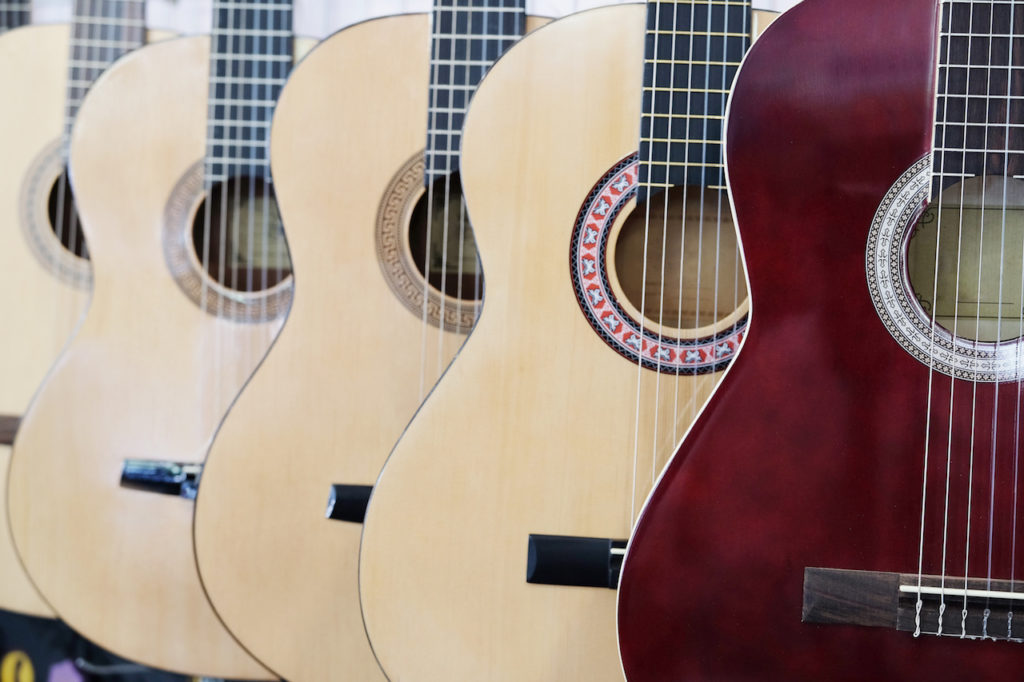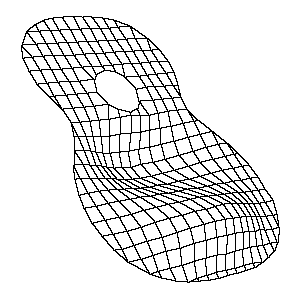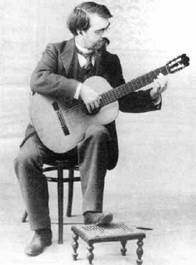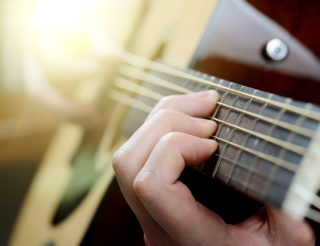A Beginner’s Guide to Classical Guitar
Author: Lucas Frost

I’m at it again… this time with acoustics and that too Classical Guitar! Echoing my previous series about 10 electric guitars, this time I’m looking at some acoustics which are worth being clued up on.
Table of Contents
Classical Guitar
My first guitar encounter was with a Classical. In fact, because they can be found at much cheaper prices and have softer strings, they seem to be the “first guitar” of most people. Practically synonymous with nylon strings (and are thus softer on your fingers), Classical guitars are often rubbish, bearing associations with tacky pink models, Made in China out of match-wood and bought for some nine-year old’s birthday for £29.99. But if you ever come across a slightly nicer model, perhaps one made in Spain by a well-known company or even an artisanal luthier, you will surely fall in love with them. Bear in mind that you have to approach it differently, and please don’t compare it to their steel string progeny – Classicals may look almost identical, but are meant to be played using fingerpicking technique and are less likely to suit pop, rock and blues styles. And because they are the grandfathers of all modern steel string guitars, we should take it upon ourselves to know a little bit about them. So I think a little history is a must.
Background
Stringed instruments have obviously existed for a very long time, and all over the world. While the word “guitar” probably comes from Cithara, a kind of Lyre from Ancient Greece, various designs and styles of ancient guitars floated around Europe for a while. Particularly around the Mediterranean region there was a lot of interchange with Islamic cultures, which had a strong and lively music tradition involving lutes. The guitar’s connection with Spain, which would become cemented in the 19th century, probably owes somewhat to the Moorish influence in Andalusia, who brought with them the Persian Oud. In any case, the basic concept – attaching strings between a headstock and a resonant body, to be played by pressing the strings against a fretted neck – has appeared in pictures, tales and texts since medieval times.
Although all these styles of “guitar” were making use of the same principal, they differed in their details. Shapes, length, number of strings etc. were normally a regional preference, where even particular Luthiers (guitar makers) would have their own personal penchants. It took a brilliant virtuoso guitarist to champion the design of an equally exquisite luthier before the world settled on a “definitive” design. And so, during the late 1800s, when audiences all over Europe were wooed by guitar superhero Francisco Tárrega (video below), they took notice at the guitar he was playing. Made by distinguished luthier Antonio de Torres Jurado, this was the model which spawned the guitar as we know it today. Seeing as both men were Spanish, it seems logical that the Classical guitar is also knows as the Spanish guitar.
Key Design Features
In the time before electronic amplification, the guitar’s volume was obviously of paramount importance. Torres’ design was louder, thanks to a larger sound-hole and thinner soundboard. But to make the thin top stable enough, he lined the inside with braces (thin strips of supporting wood), employing a geometrical pattern based on symmetrical triangles – the braces radiated out from the bridge like a fan. Strictly speaking not his own innovation; but his careful attention to geometry maximized the transmission of harmonious overtones, a relationship which can be explained mathematically.

For instance, by placing the bridge on the center point between sound-hole and butt, the soundboard can resonate more evenly and emphasize the note’s fundamental frequency. All of this was crucial in making the guitar louder and maintain a clear tone.
Tone, Technique and Feel
With their softer nylon strings (a good substitute for the old “catgut”, which was never cat but more commonly sheep intestine), classical guitars have a warm, round tone, with a soft attack and great dynamic response. Relatively speaking, sustain is short, and the strings are under less tension than their modern steel-string counterparts, which to me imparts a more “lively” tone that dances around with its beautiful harmonic overtones, resulting in a sound which is simultaneously dark but clear.
Check out the video to know what to look for and more importantly what to avoid when buying your first nylon string classical guitar.
Incidentally, the softness of nylon strings is one reason why kids often start on classical guitars: they are less painful on your fingertips. And while we are on the subject of comparing classicals to steel-strings, another great difference is the string spacing. By that I mean both the gap between strings, as well as the gap from string to fretboard (called the “action” to be precise), which are both wider than with steel-string guitars. This is because Classicals are made to be played with fingerpicking technique. It emphasizes the softness, enables more intricate playing as well as playing accompaniment together with melody; and increasing the space between strings makes it easier to target the right string!

In fact, to play Classicals “properly” requires a whole new approach to technique. Legs apart, the left knee higher than the right, you want to balance the instrument between your thighs so that neck lies at around 45º angle. (Tárrega himself popularized this posture) This angle not only gives you the ideal position for your right hand’s fingerpicking technique, but equally will enable you a better access across the wide neck without straining your wrist. As the string spacing is wider, so the neck ends up considerably wider too, which requires a more agile use of your left hand). It’s a stance which gives the ultimate speed, control and articulation, though some players remain a little stiff in this position.
Of course Flamenco is a lot cooler about the whole posture thing:
So why bother?
Unfortunately, for most popular music the Classical guitar is less suited, as it lacks the zing and sustain. They detune fairly regularly, are rubbish for bending notes (so no Blues) and not much good for a slide either. And unless you are willing to spend some decent money for one you might be underwhelmed by their tone. But in the right moments the classical guitar is amazing to behold!
Classicals are obligatory for Flamenco as well as Classical music (obviously), as both styles are based on fingerpicking technique. You just can’t play some of that stuff with a pick, and it would sound jarring on a steel-string. But the Spanish guitar’s repertoire extends into the folk music scene, some casual appearances in acoustic metal (video below), and anything which is meant to evoke a Latin feel – all the way from Tom Jobim’s Bossa Nova to Compay Segundo’s Son. Even Enrique Iglesias has an obligatory classical guitar in pretty much every song…
Ok, that last example may not have convinced you. But even so, hope you enjoyed the historical part. It’s good to know the background of the instrument you’re playing.








No comments yet - be the first.